Every day, LED lights replace a number of traditional light fixtures because of their long lifespan and the great economic benefits they bring. But you may always find clients complaining about the LED lights they bought, saying that they don’t last at all. So how long do LED lights really last, and how to prolong their lifespan? Continue reading and get to know the most expert information about LED lights!
How long do led lights last?
Single-light-emitting diode (LED) lights have a theoretical service life of 100,000 hours. However, because other electrical components also have a lifespan, the LED bulb cannot have a service life of 100,000 hours once constructed. In general, it is about 50,000 hours.
The fact that LEDs do not experience filament melting is the reason for their long lifespan. The LED will progressively deteriorate over time rather than abruptly stop working. Generally speaking, after 50,000 hours of continuous use, high-grade LEDs will be able to retain over 60% of their original brightness. The LED may still be producing light, albeit very weakly, if it has reached the end of its rated service life.
LED vs. traditional lamps lifespan comparison
Although LED lamps carry an initial expense, they prove more durable through their long lifespan which reduces the need for repeated replacements. In a study comparing the replacement of traditional sodium lamps with LED street lamps, it was found that the number of traditional lamps requiring replacement was 20 times greater than that of LED lamps.
The following bar chart compares the lifespans of common light sources:
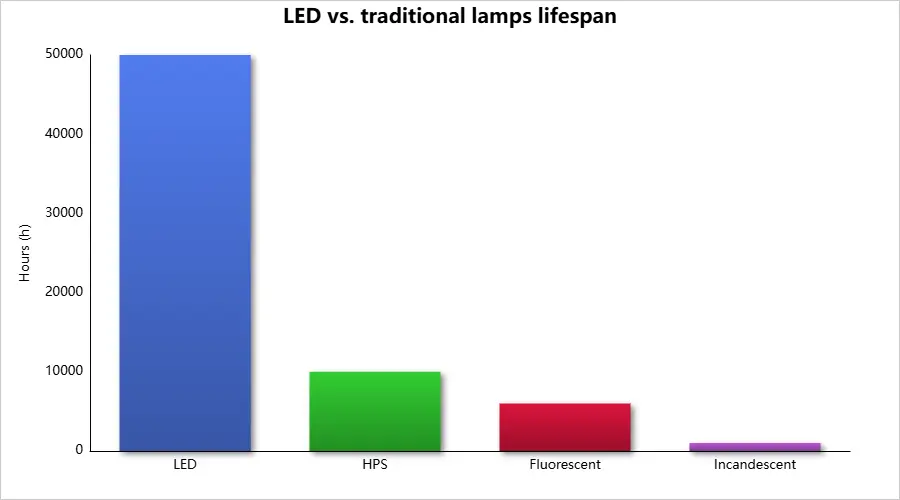
Do LED lights degrade over time?
LED lights won’t get worn out, but they will be affected by light decay. LED light decay appears as a progressive decrease in light intensity together with color variation starting after an operational time between 4,000 to 10,000 hours. Good heat dissipation, the use of constant current power supplies, and packaging materials that are resistant to aging can help delay the onset of LED light decay. According to the L70 standard, an LED lamp is generally considered to have reached the end of its life when its light output drops to 70% of the initial value (around 50,000 hours).
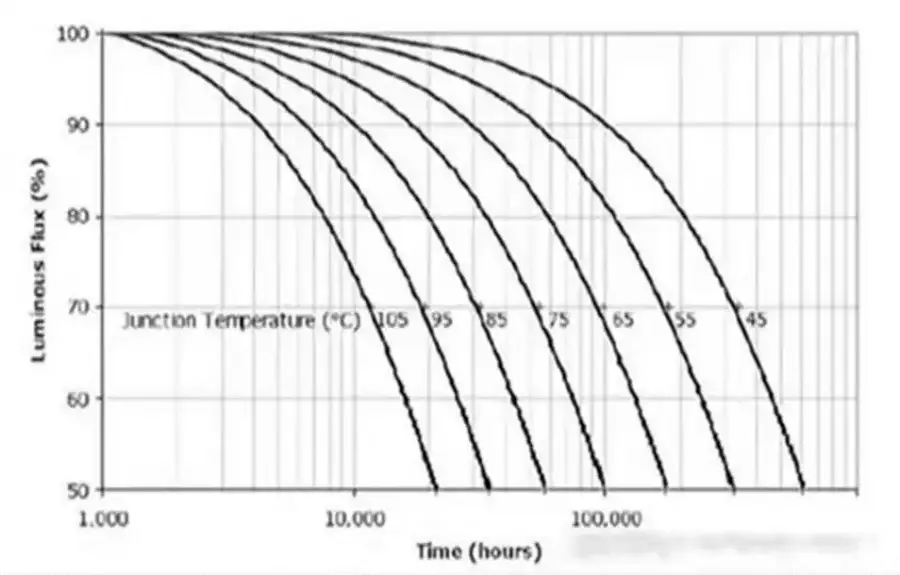
Factors that affect the lifespan of LED lights
- Thermal management: Since LED lamp beads are extremely heat-sensitive, high temperatures will shorten their lifespan. As a result, efficient thermal management—which includes thermal materials, thermal structures, and thermal design—is crucial. Thermal management is especially important for outdoor light fixtures like the street lights.
- Current and voltage: If the current and voltage is too high or too low, they can damage LED chips or reduce its brightness. Furthermore, the volt-ampere properties of LEDs dictate that their power supply can only be a constant-current power supply. A non-constant-current power source will limit the LED lamp’s lifespan and cause rapid light decay.
- Environment: Harsh environmental factors may shorten the life of an LED lamp, which include high temperatures, high humidity, intense vibrations, or corrosive gases. Dust and bird dropping accumulation will lower the efficiency of outdoor lighting’s heat dissipation. Furthermore, the outdoor environment emits intense UV radiation that will shorten the LED’s lifespan.
How do manufacturers make the LED lights last longer?
To maximize their lifespan, LEDs must be carefully designed during the production process.
- Design of heat dissipation: Enhance the design of heat dissipation at every stage of the process. These steps include chip level, package level, board level, and system level. Thermal holes are added to the LED’s heat transfer base and surrounding area. Then, a layer of copper foil is plated around it to minimize the heat dissipation substrate’s thermal resistance. Additionally, employ heat sinks, heat pipes, vapor chambers, loop heat pipes, Piezo fans, and other cooling devices.
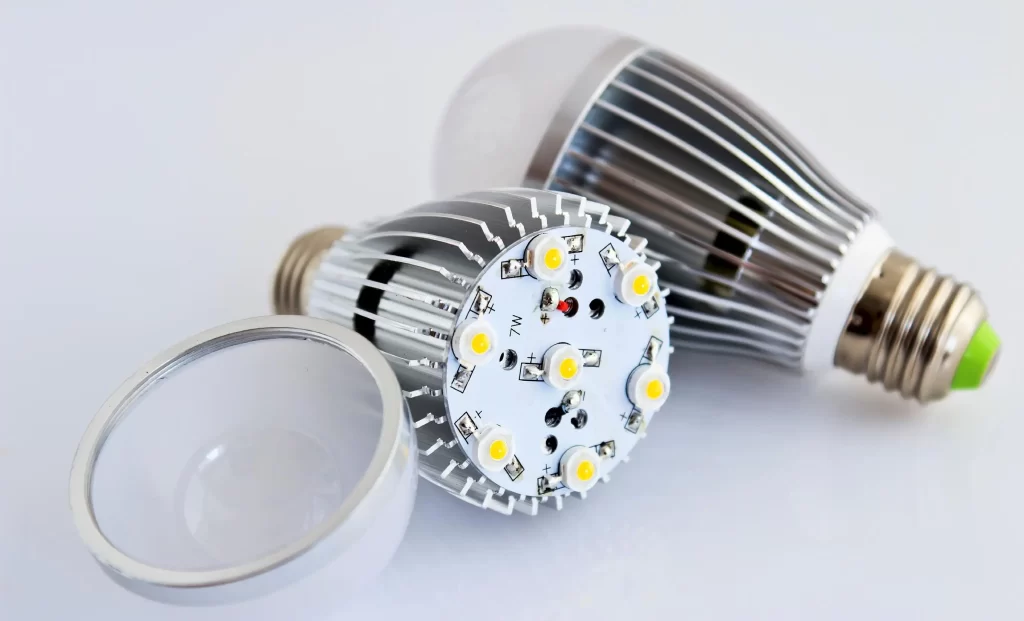
- Epoxy resin: Since the encapsulating resin reflects the light produced by the white LEDs, stopping its use can eliminate deterioration factors. A resin reflecting plate will result in a significant decrease in light output. This is also the main reason for the use of metal and ceramic packaging materials.
- Encapsulation process: In the same aging environment, LED lights encapsulated with conventional primer had 76% less light attenuation than LED lights encapsulated with Class A low-attenuation adhesive. Consequently, selecting LED lights with high-quality packaging will significantly increase their lifespan.
The production of Casyoo LED lights are under strict supervision and applies the best materials. We spare no effort to provide LED lights that can last as long as possible.
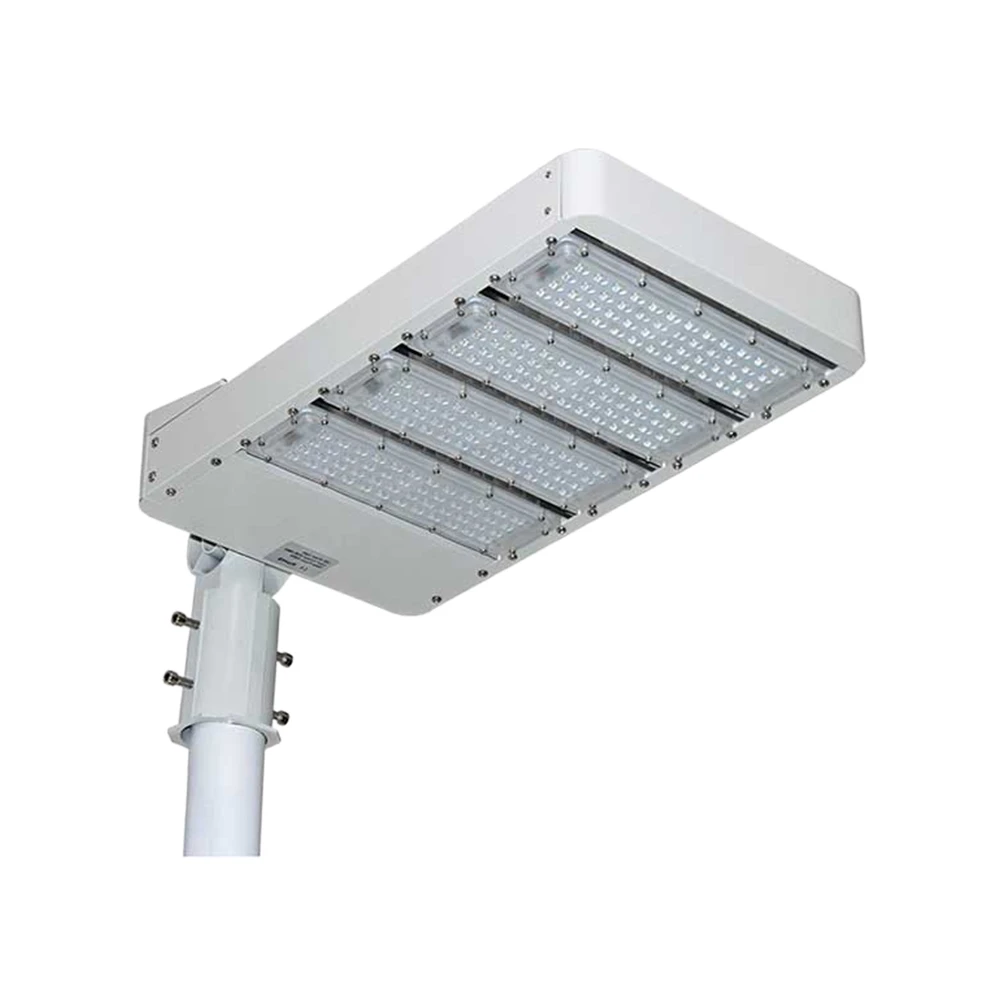
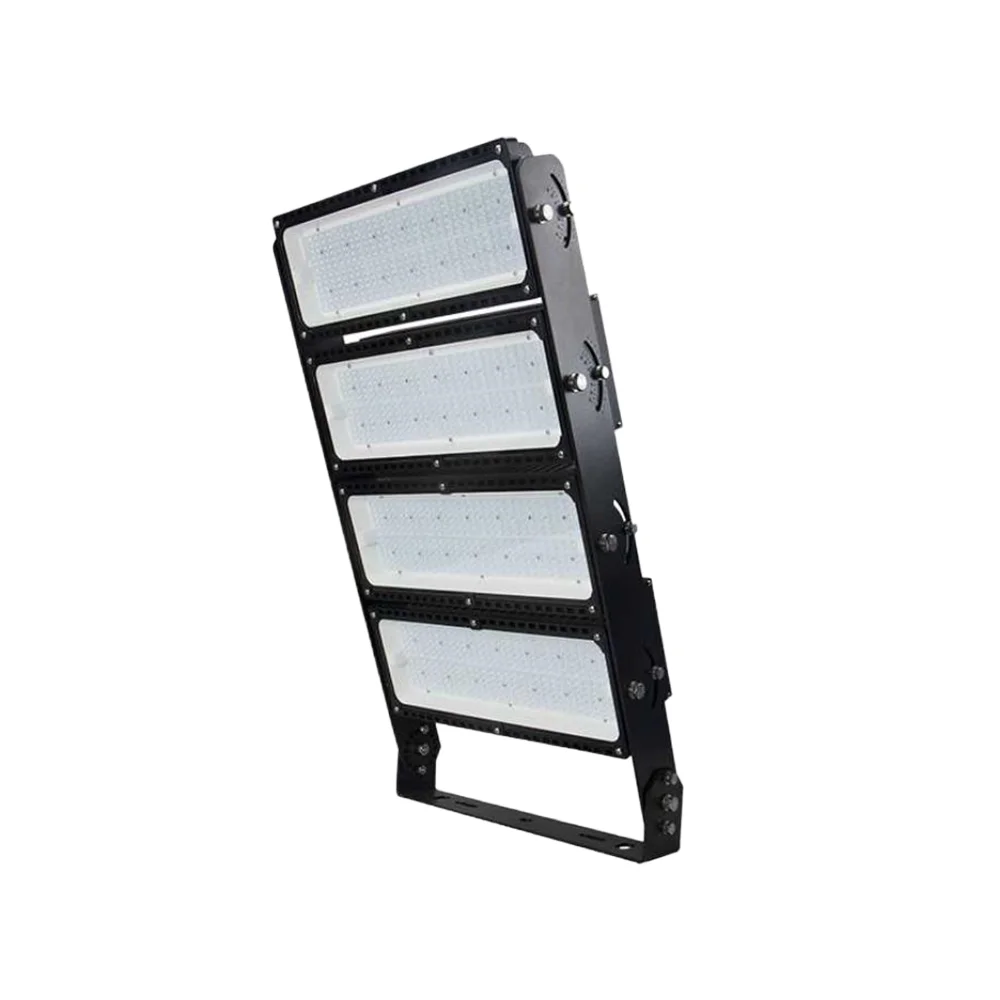
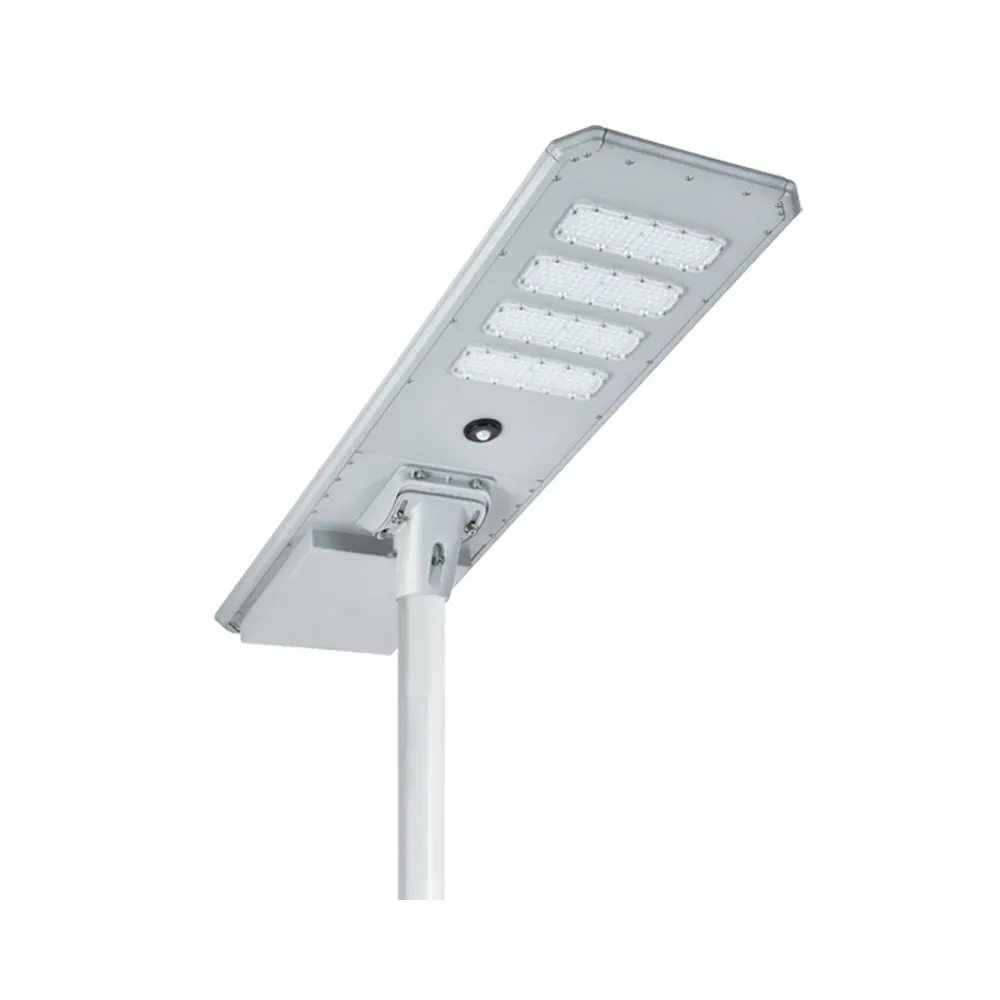
Real user data: how long do LED lights actually last?
In real-world applications, many users’ LED lamps fail to reach their ideal lifespan due to a variety of influencing factors. Below are actual user experiences with LED lamp lifespans for reference:
- Reddit user 1: 32 months (2.5 years) in use, still functioning normally as of 2025; has been continuously on since purchase.
- Reddit user 2: About 3 years in use, starting to fail. Used 2-4 hours a day. The bulb is a low-cost product.
- Reddit user 3: Multiple bulbs have been used continuously for over 3 years, with one having been in use for 6 years, although its brightness has significantly decreased. The bulb is almost always on.
- Reddit user 4: Low-power LED bulbs have been in use for over 5 years and are still functioning well. Daily usage is long, but not exceeding 16 hours per day.
- Quora user 1: Multiple LED lights have been in use for several years without failure. The bulbs are used in a typical home lighting environment and have been on continuously.
How can you make your LED lights last longer?
Exploring what affects LED lifespan enables you to implement proper LED maintenance methods which lower your long-term costs. The following guidance helps increase LED lamp longevity:
- Ensure proper heat dissipation: LED lights must be located in areas with good ventilation where they remain out of both sunlight exposure and heat-producing appliances. Additionally, regularly wipe off any dust on the surface of the radiator and lamps to maintain effective heat dissipation.
- Avoid frequent switching: While frequent switching doesn’t impact LED lamps as much as traditional lamps, it can still slightly affect the circuitry. It is advisable to minimize the frequency of switching.
- About long-term use: The continuous nature of LED operations produces minimal heat production. However, excessive heat can still build up in LEDs after extended operation which negatively impacts their operational longevity. If the lamps need to be used for long periods, opt for high-quality LEDs with good heat dissipation.
- Dimming and intelligent functions: You can use lamps that come with intelligent features which both turn off automatically when lighting is not required and provide dimable settings to lower current usage and prevent overheating.
Conclusions
LED lights do have a longer lifespan than traditional lights. By reading this passage, I hope you get to know more about the real lifespan, the ways to measure the lifetime, what affects it, and how to prolong the working hours. Remember, the key to finding an LED light that lasts a long time is to buy from qualified manufacturers like Casyoo. If you need other help while choosing LED lights, you can reach out to us at any time!




